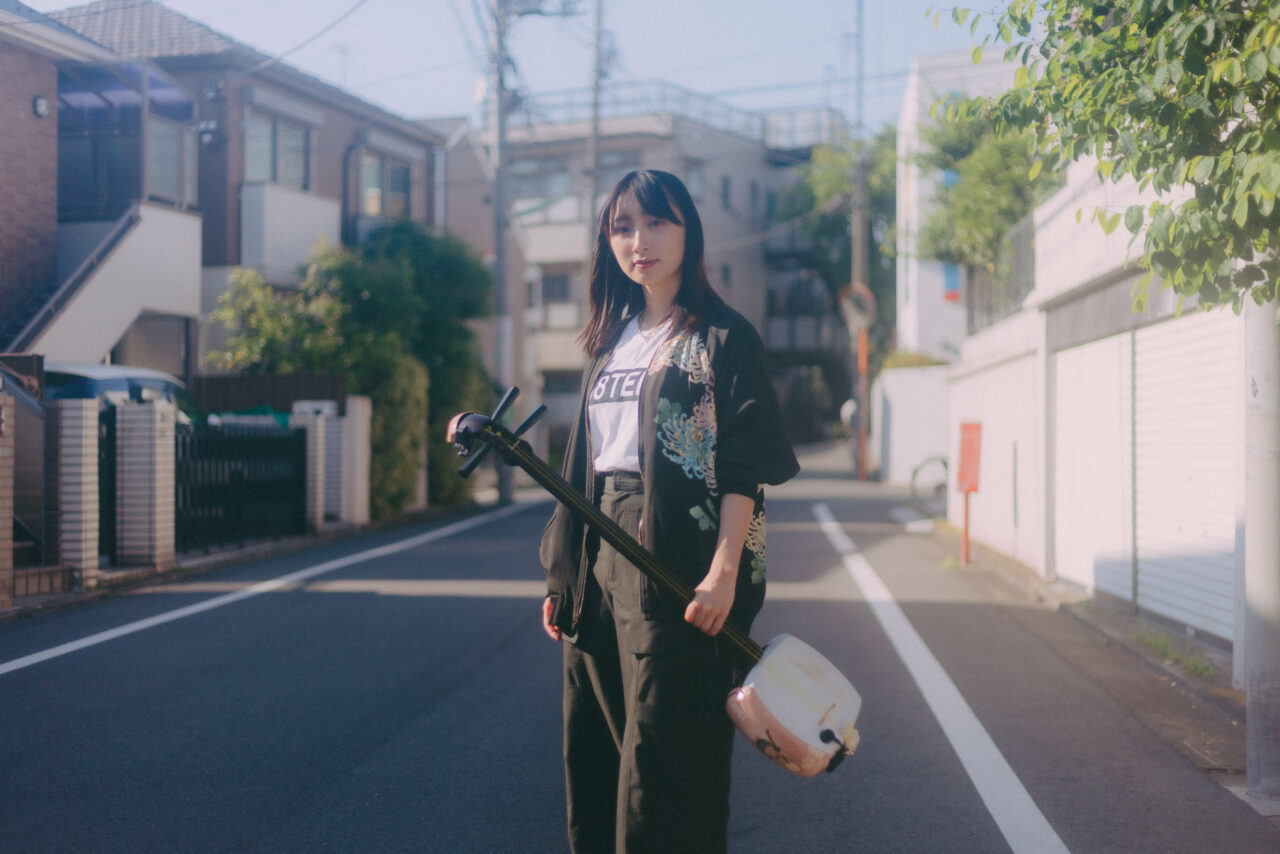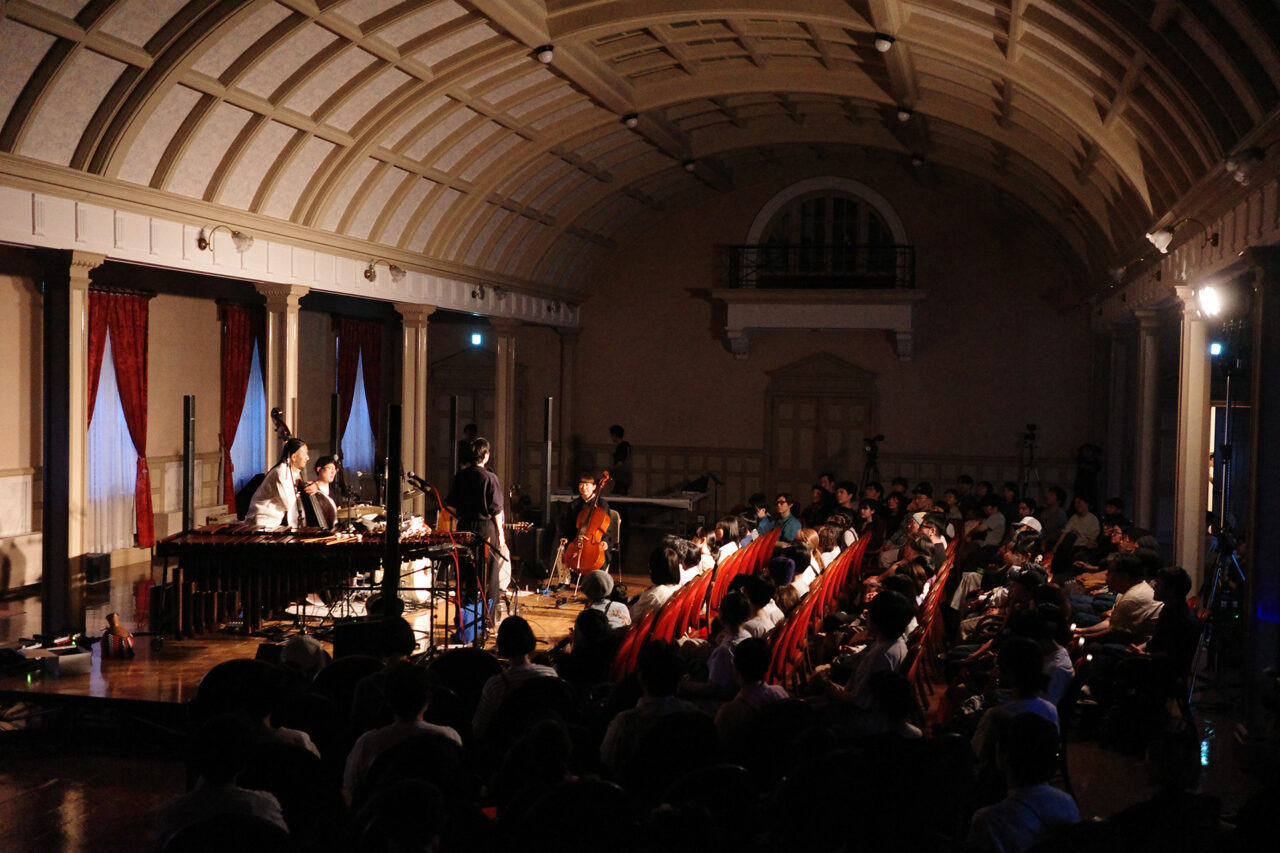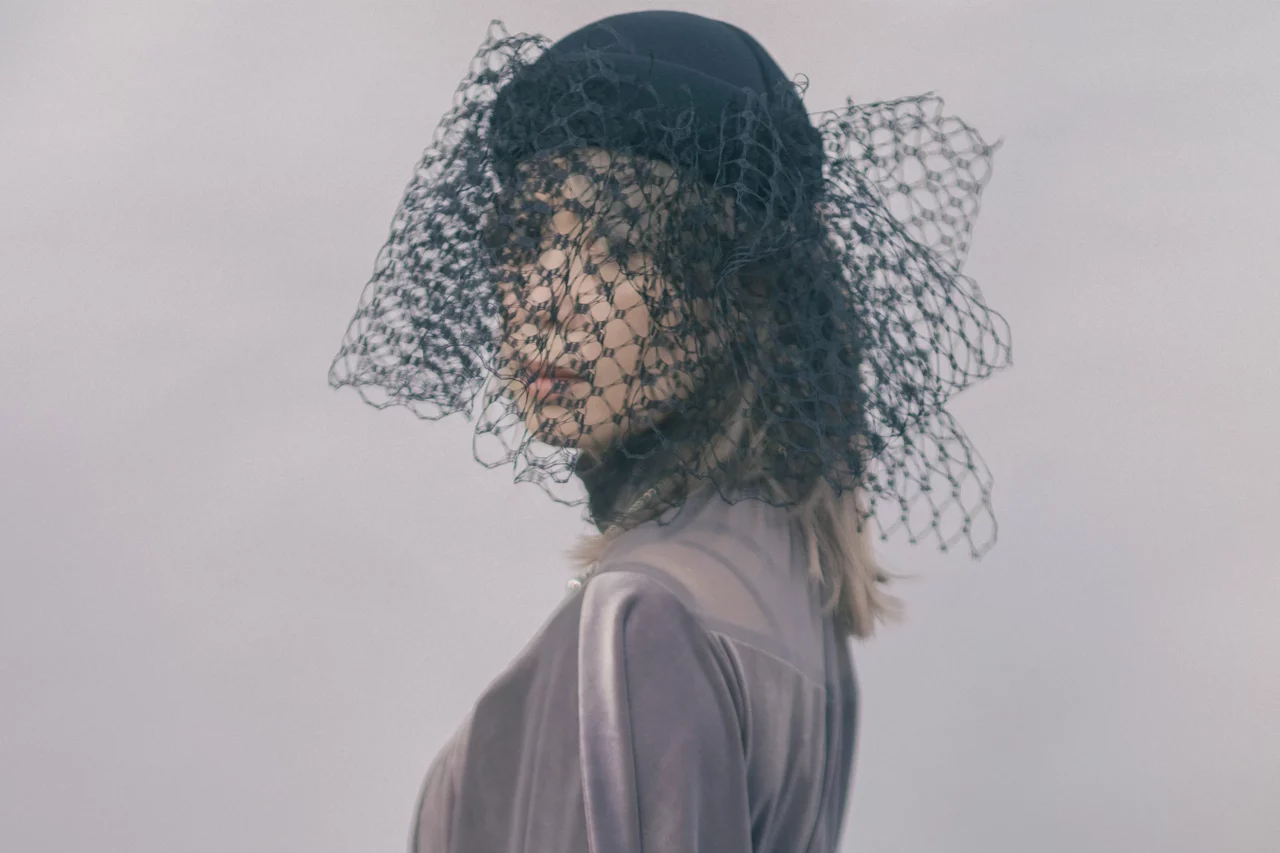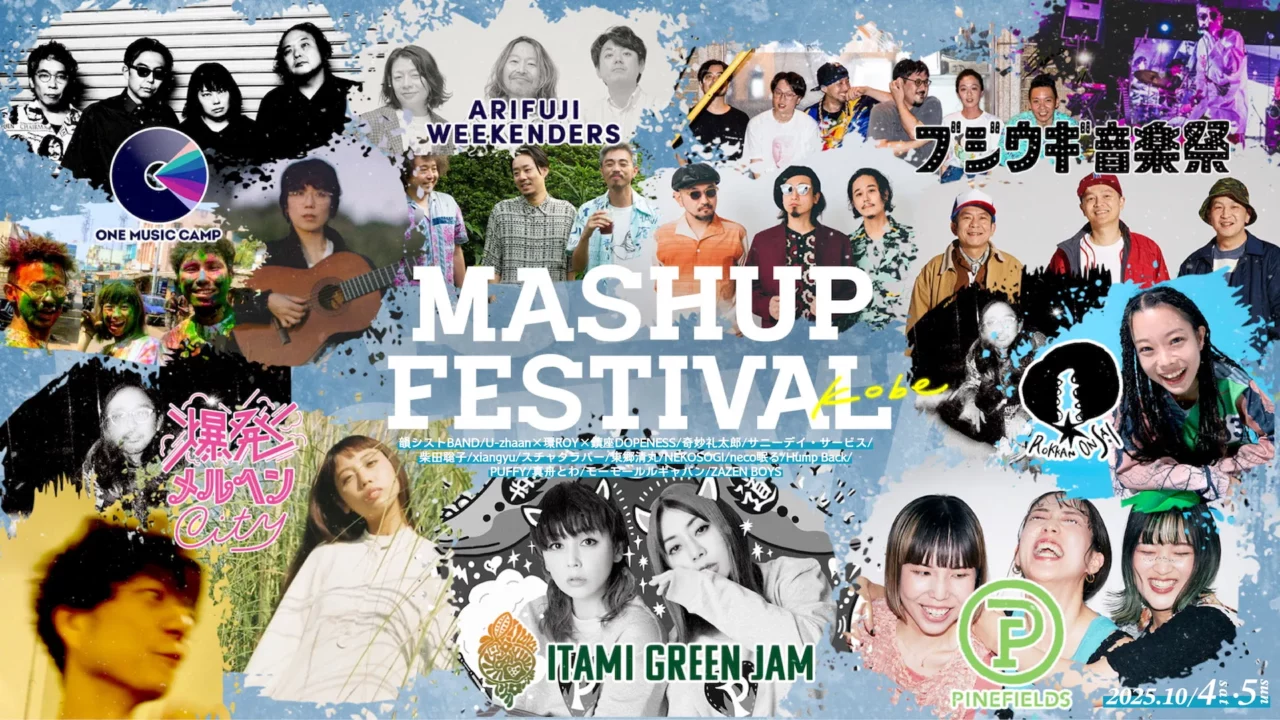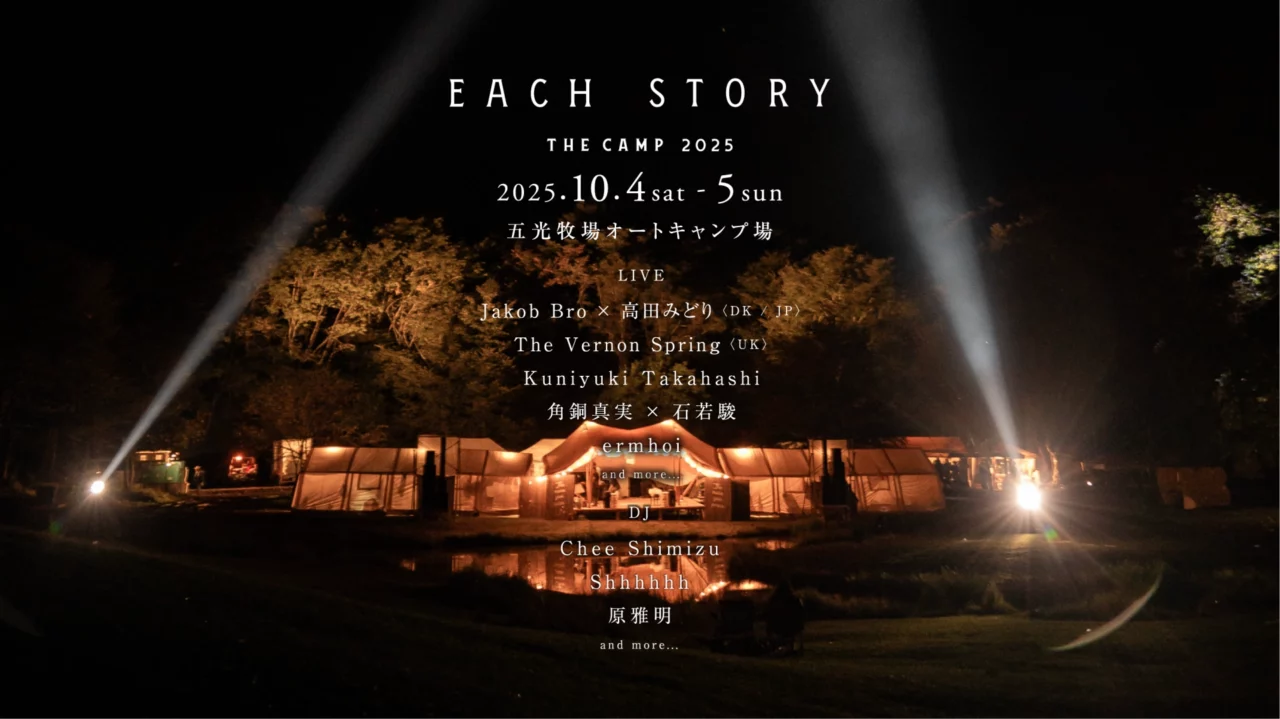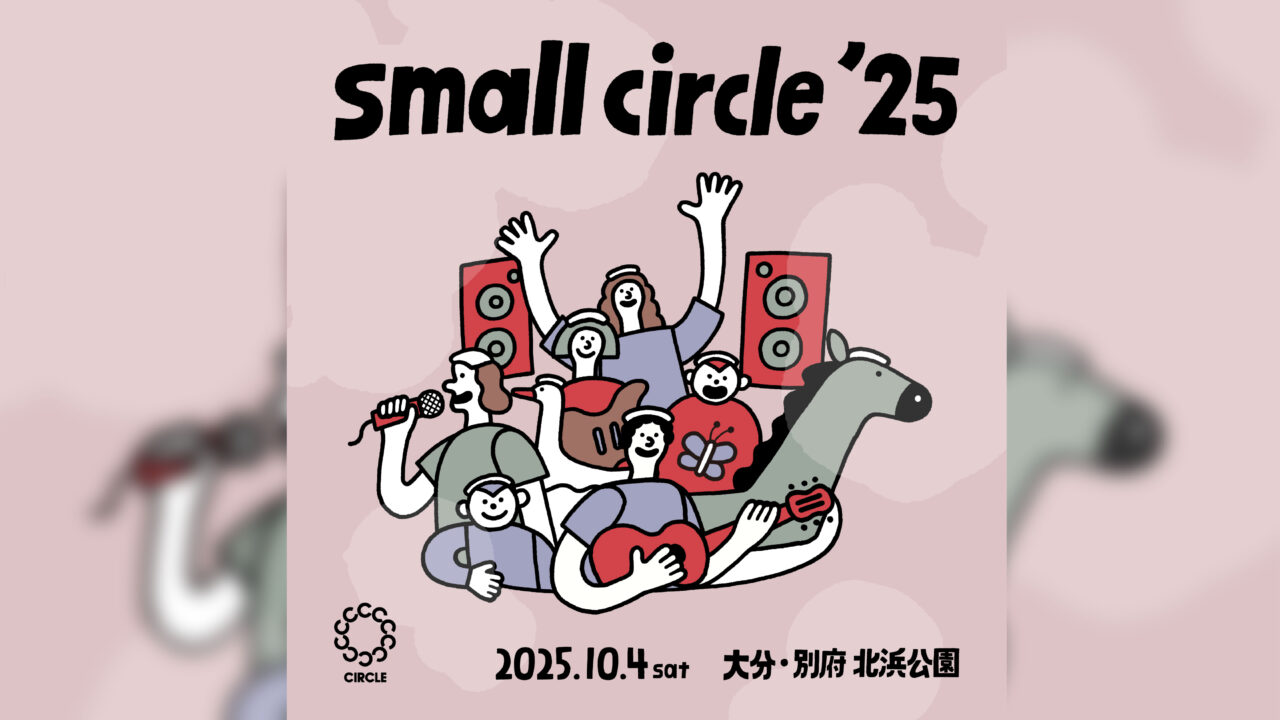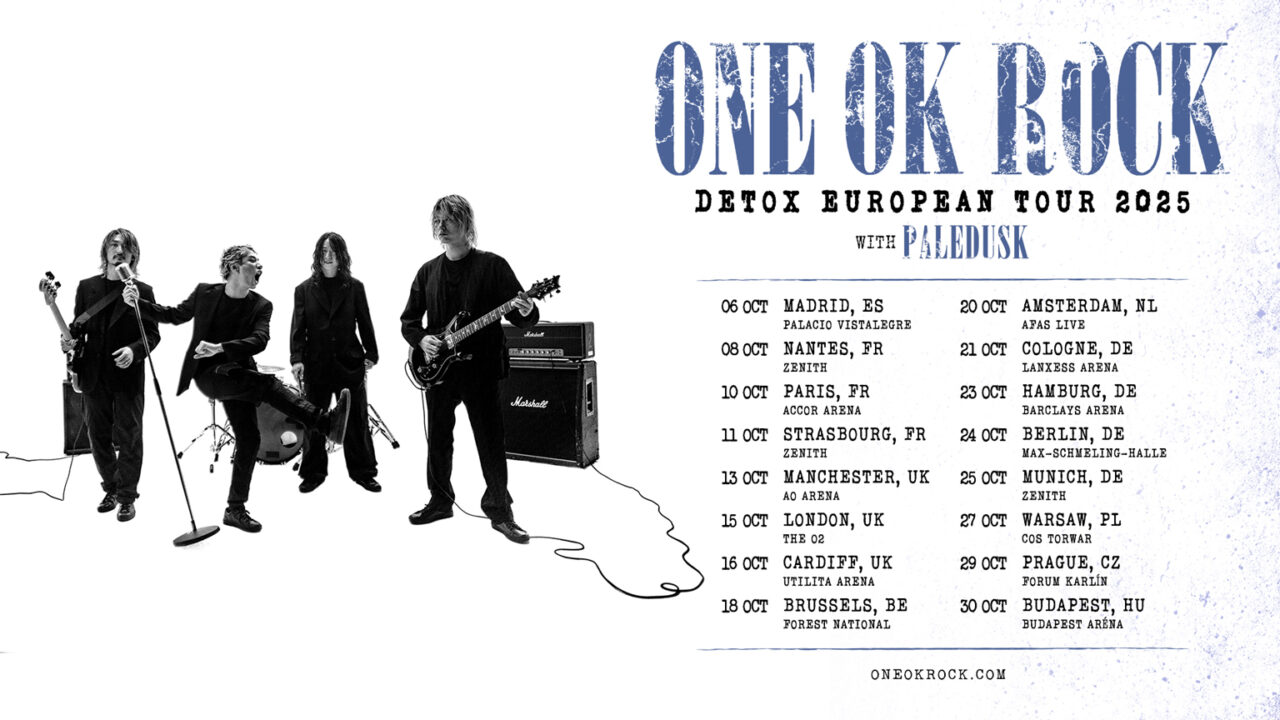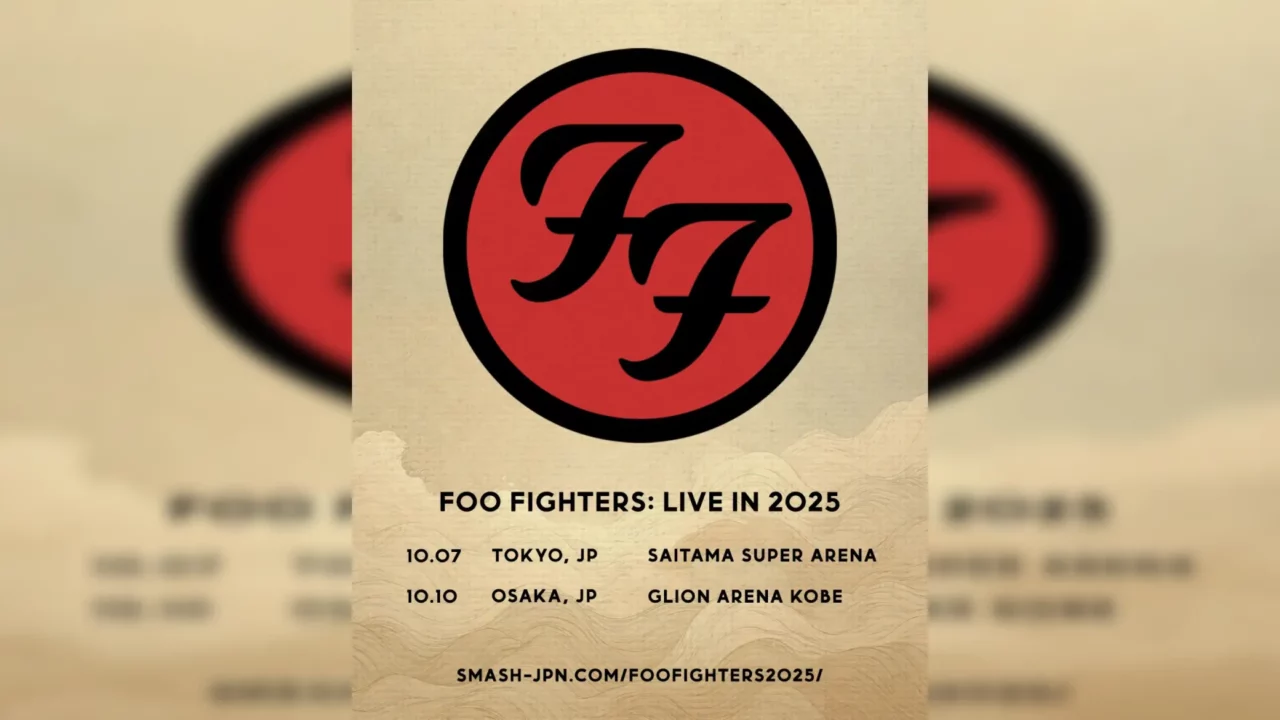At PLAY! MUSEUM in Tachikawa, Tokyo, a daring exhibition titled “ONE PIECE ONLY” is breaking the mold. While you might expect a showcase of iconic ONE PIECE scenes, original artwork, and themed café delights, this exhibit offers something far more unexpected. It immerses visitors in the monumental journey behind the scenes of manga creation, from the artist’s sketches to the lesser-known stages of printing, binding, and transforming a weekly serialization into a beloved comic book. Rather than focusing on the world of ONE PIECE, this exhibition celebrates the unseen labor that brings the adventure to life — a tribute to the crew who made it possible. It’s not just about manga; it’s about the voyage itself.
© Eiichiro Oda / Shueisha Inc.
INDEX

INDEX
A Grand Scroll Unfolds: Every Page of ONE PIECE on Display
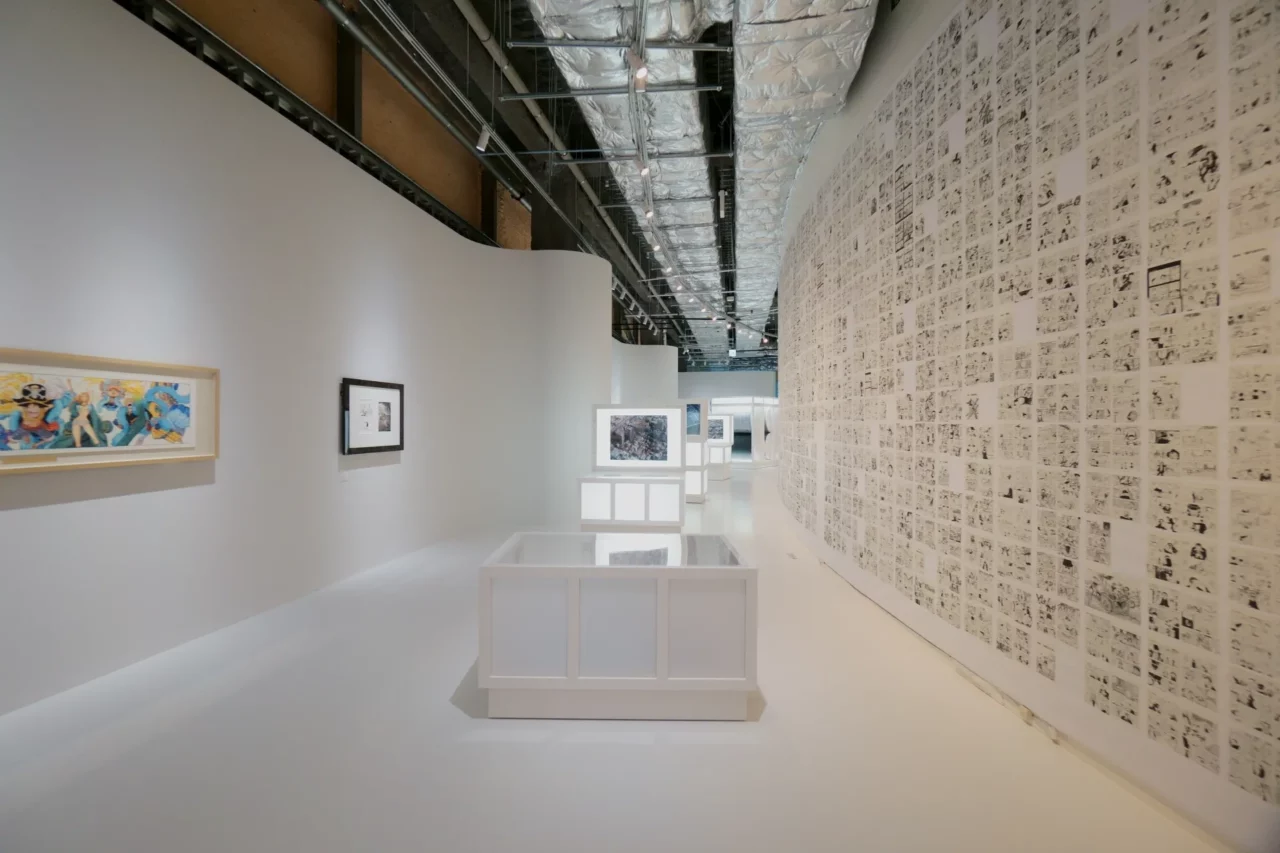
The exhibition begins with the overwhelming presence of “The Wall.” This massive display features every page from ONE PIECE volumes 1 to 109, meticulously arranged across the wall. Starting from the entrance and curving dramatically through the space, it stretches approximately 3.6 meters high and 140 meters long, leading all the way to the merchandise section—an uninterrupted scroll of art.
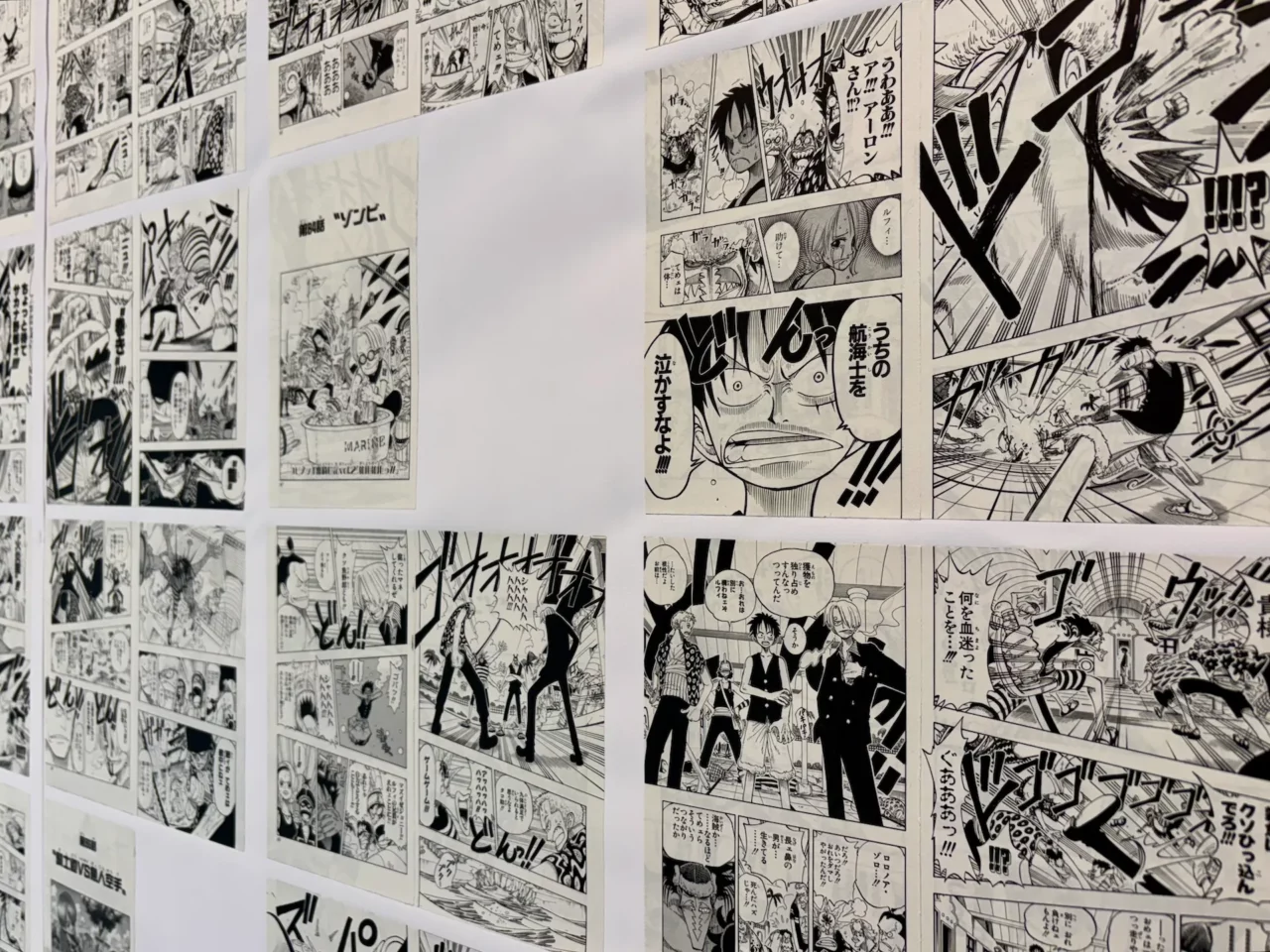
If you look closely, you’ll notice that this “The Wall” is made up of actual pages from the commercial manga, carefully taken apart and pasted one by one. Instead of simply printing the archive data from Shueisha’s collection, eight staff members spent about a month putting it all together. According to Masashi Okamoto, the curator of the exhibition and producer of “Shueisha Manga Art Heritage,” “I thought it would be more interesting to have the same physical pages that you all own.” Indeed, the familiar texture of the paper and the smell of the ink strongly personalize the experience of this exhibition. For those who own the entire set of ONE PIECE, this is like having your own universe at home.
INDEX
Transforming Manga into Art with Full-Force Printing
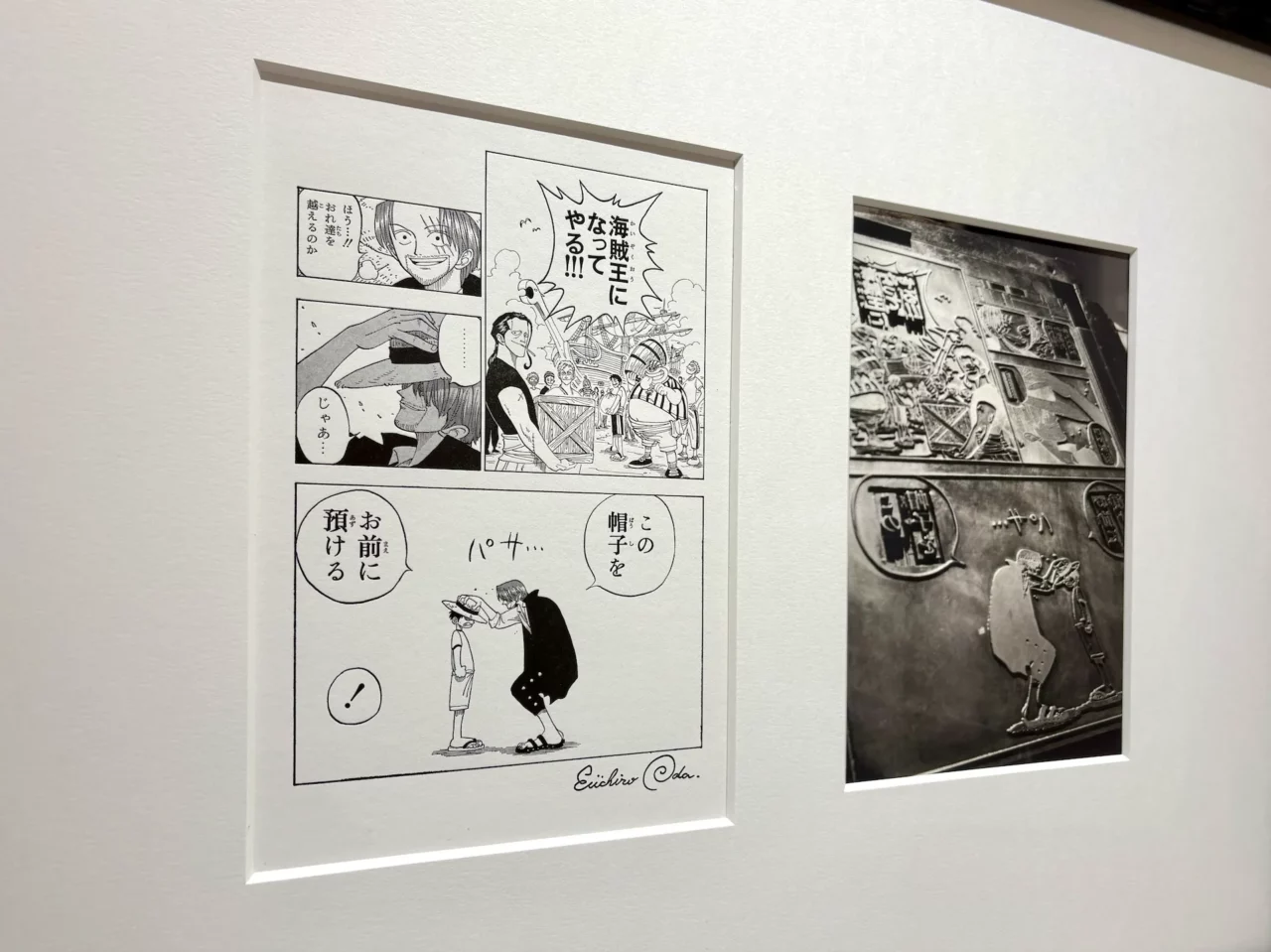
On the other hand, there are also unfamiliar printing methods. The exhibition is curated by “Shueisha Manga Art Heritage,” a project by Shueisha dedicated to preserving manga as an art form for future generations. As part of this initiative, they create and sell “manga prints” produced with high-quality materials and craftsmanship through a website and galleries. The photo shows a special print made using traditional letterpress printing with a metal plate. The faint indentations left by the plate add significant depth and enhance the impact of the scene. It made me realize that the word “impression” in “impressionistic” originally referred to “pressing to leave a shape or color.”
By the way, according to the official website of this project, the size of manga original drawings (B4) is almost the same as that of ukiyo-e (Mino edition). I suddenly realized that the boundary I had assumed between manga and art became almost invisible after reading that sentence.
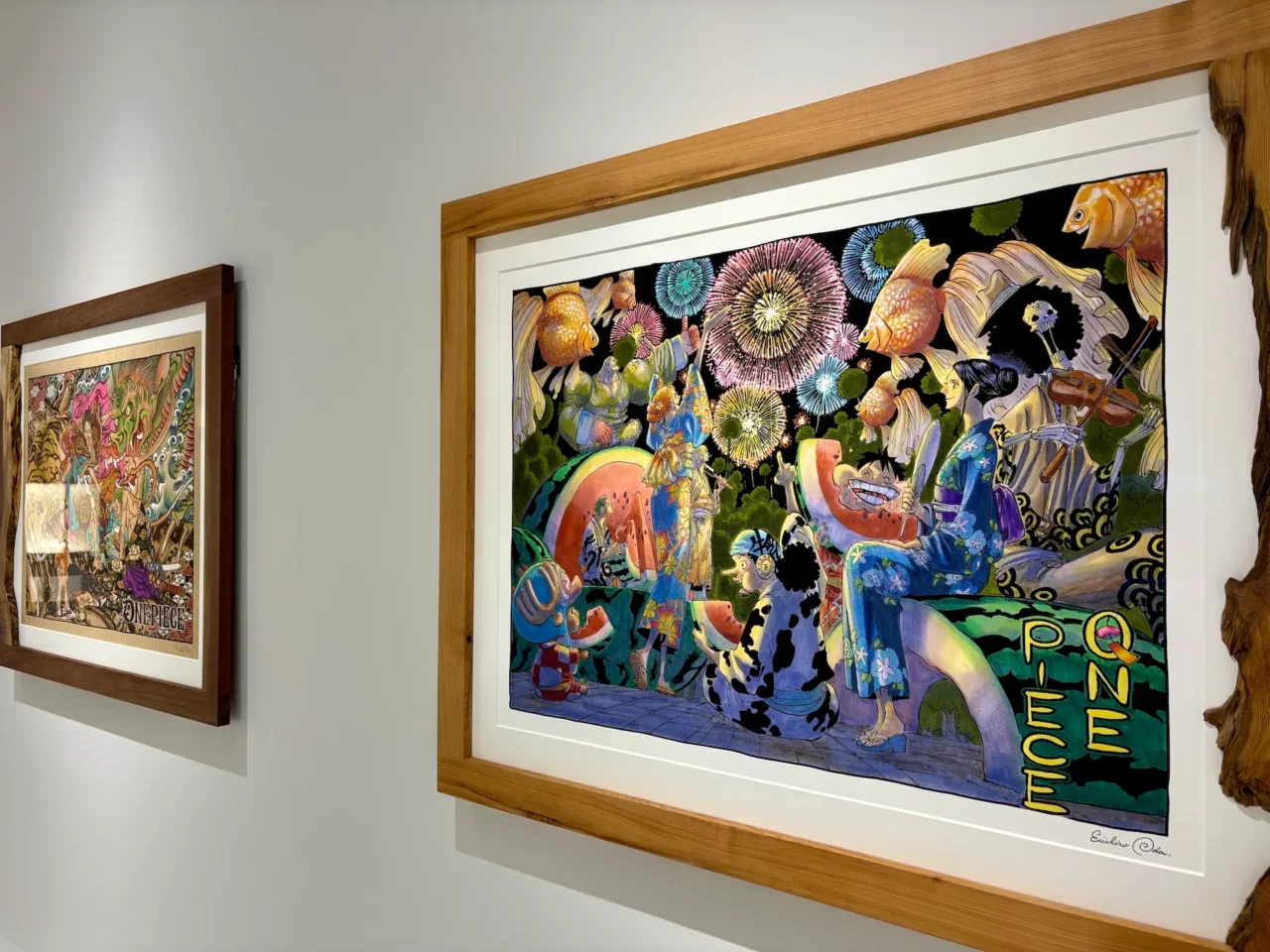
Similarly, a range of ultra-high-quality color works are on display, offering a visual delight. The vivid colors are so striking that they could easily be mistaken for original artwork.
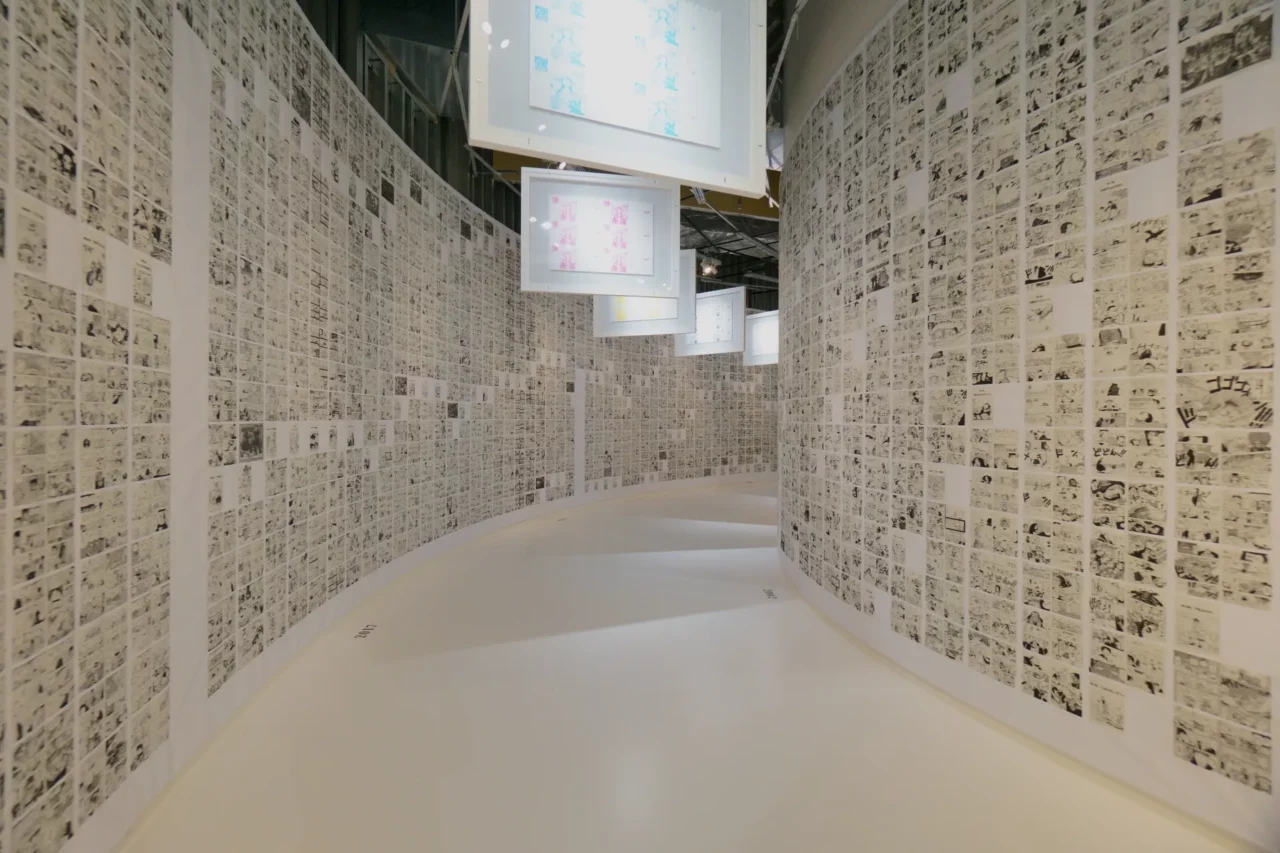
Following “The Wall,” you proceed further into the exhibition, where suspended from the ceiling are the seven color plates used to print the cover of One Piece‘s 100th volume. Typically, Jump Comics covers are printed with five colors—cyan, magenta, yellow, black, and fluorescent pink. However, to capture the colors of this milestone 100th volume, two additional colors, fluorescent blue and fluorescent yellow, were added, making it a seven-color process to fully realize the vibrancy of the original artwork. Seen this way, the multicolor printing has an almost ukiyo-e quality to it—an intriguing parallel.





